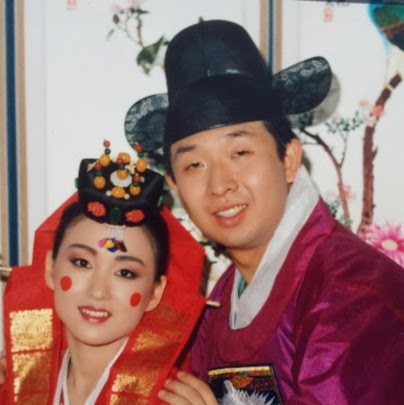Myung Ho Park
age ~79
from Parkland, FL
- Also known as:
-
- Myung H Park
- Myung No Park
- Myung N Park
- Myung-Ho H Park
- Myungho Park
- Mung H Park
- Myvung H Park
- Myun Park
- Myung Opark
- Park Myung-Ho
Myung Park Phones & Addresses
- Parkland, FL
- Lancaster, CA
- Boca Raton, FL
- Clay, NY
- Deerfield Bch, FL
Education
-
School / High School:Wonju Branch Of Yonsei University College Of Medicine1966
Languages
English
Ranks
-
Certificate:Urology, 1978
Specialities
Urology
Medicine Doctors

Dr. Myung C Park - MD (Doctor of Medicine)
view sourceSpecialties:
Urology
Certifications:
Urology, 1978
Languages:
English
Education:
Medical School
Wonju Branch Of Yonsei University College Of Medicine
Graduated: 1966
Medical School
Epis Hospital
Graduated: 1966
Medical School
Hamot Hospital
Graduated: 1966
Medical School
St Elizabeth Hospital
Graduated: 1966
Medical School
Millard Fillmore Hospital
Graduated: 1966
Wonju Branch Of Yonsei University College Of Medicine
Graduated: 1966
Medical School
Epis Hospital
Graduated: 1966
Medical School
Hamot Hospital
Graduated: 1966
Medical School
St Elizabeth Hospital
Graduated: 1966
Medical School
Millard Fillmore Hospital
Graduated: 1966
License Records
Myung San Park
License #:
2705087295 - Expired
Category:
Contractor
Issued Date:
Jul 26, 2004
Expiration Date:
Jul 31, 2010
Type:
Class A
Name / Title
Company / Classification
Phones & Addresses
President, Director
Boca Flasher, Inc
Whol Electronic Parts/Equipment
Whol Electronic Parts/Equipment
552 NW 77 St, Boca Raton, FL 33487
(561)9895338
(561)9895338
PARK & CHUNG, LLC
YJP HOLDINGS LLC
465 NE Spanish Trl, Boca Raton, FL 33432
President
B O Hyun Sa Inc
Religious Organization
Religious Organization
7110 SW 182 Way, Fort Lauderdale, FL 33331
(954)2526033
(954)2526033
Director
MUN SU HUMANITARIAN SOCIETY, INC
Religious Organization · Business Services at Non-Commercial Site
Religious Organization · Business Services at Non-Commercial Site
231 Salem St, Wakefield, MA 01880
Pompano Beach, FL 33067
Pompano Beach, FL 33067
Director
Multimedia Research Laboratory, Inc
1701 Clint Moore Rd, Boca Raton, FL 33487
President, Director
Alta Research Corporation
1701 Clint Moore Rd, Boca Raton, FL 33487
Director
Nexwav Technology, Inc
552 NW 77 St, Boca Raton, FL 33487
Us Patents
-
Direct Heat Sink Technology For Leds And Driving Circuits
view source -
US Patent:20130314920, Nov 28, 2013
-
Filed:May 25, 2012
-
Appl. No.:13/481147
-
Inventors:Myung Ho Park - Boca Raton FL, US
Luis Rosado - Miramar FL, US -
International Classification:H05K 7/20
F21V 29/00 -
US Classification:36224902, 174252
-
Abstract:Thermally radiating heat sinks are soldered directly beneath individual LEDs and other heat generating electronic components on the opposite side of an FR circuit board and thermally coupled to the heat source through multiple micro-vias. The micro-vias are filled with solder in order to increase the thermal transmission of heat energy through the circuit board to the heat sinks The circuit board thickness is minimized to further reduce the thermal resistance of the transmission path. The method employed facilitates the heat transfer away from high-powered LEDs and other heat generating circuitry without spreading the heat energy to thermally sensitive electronic circuits and without the need for expensive substrates commonly employed to dissipate heat in electronic circuits. The method is adapted for LED lighting circuits and preferably to industry standard bulb sizes such as MR11, MR16, R20, PAR30, PAR38, and PAR56.
Lawyers & Attorneys

Myung Hee Park - Lawyer
view sourceLicenses:
Dist. of Columbia - Active 2012

Myung Park - Lawyer
view sourceSpecialties:
Antitrust & Unfair Competition
Environmental Law
Litigation
Environmental Law
Litigation
ISLN:
915965784
Admitted:
2000
University:
Univ of San Diego SOL; San Diego CA; Univ of Michigan; Ann Arbor MI
Myspace
Youtube
Googleplus

Myung Park

Myung Park

Myung Park

Myung Park

Myung Park

Myung Park

Myung Park

Myung Park
Get Report for Myung Ho Park from Parkland, FL, age ~79
![[Trailer] Glory Jane ( ) [Trailer] Glory Jane ( )](https://i.ytimg.com/vi/RAhv2oPkjko/0.jpg)

![[Poster Shooting] Man of Honor ( ) - Korean Drama ... [Poster Shooting] Man of Honor ( ) - Korean Drama ...](https://i.ytimg.com/vi/93XboychkiU/0.jpg)

![[1st Teaser] Man of Honor ( ) - Korean Drama 2011 [1st Teaser] Man of Honor ( ) - Korean Drama 2011](https://i.ytimg.com/vi/TmR9XIpJJcg/0.jpg)
